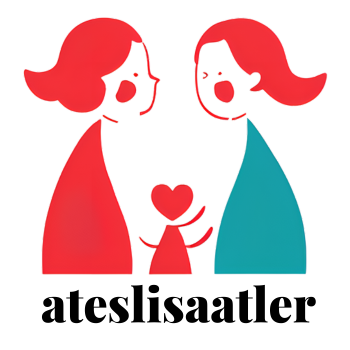
Navigating the complex dynamics of a blended family isn’t always smooth sailing. I’ve experienced firsthand how relationships can become strained when betrayal and backstabbing enter the picture. Whether it’s dealing with an unsupportive stepparent or managing conflicts between stepsiblings these situations can leave lasting emotional scars.
Over the years I’ve collected powerful backstabbing blended family quotes that capture the pain and frustration of family betrayal. These backstabbing blended family quotes don’t just validate your feelings – they provide comfort in knowing you’re not alone in your struggles. From dealing with toxic ex-spouses to managing difficult in-laws these carefully curated words of wisdom will resonate with anyone facing challenges in their blended family dynamic.
Key Takeaways
Blended family betrayal commonly manifests through toxic behaviors like parental alienation, manipulation, and spreading false narratives between family members
Setting clear boundaries and maintaining consistent communication protocols are essential for managing complex loyalties and preventing conflicts in blended families
Children in blended families who experience verbal abuse and hostile dynamics face significantly higher risks of anxiety, depression, and long-term relationship difficulties
Creating designated spaces, implementing structured routines, and establishing fair treatment policies help foster a supportive environment for all family members
Healing from family betrayal requires dedicated time for emotional recovery through therapy, self-care practices, and building new positive traditions
Backstabbing Blended Family Quotes
Toxic dynamics in blended families create deep emotional wounds through patterns of betrayal, manipulation, and deceit. The complex interplay of relationships often leads to power struggles, divided loyalties, and damaged trust.
Common Sources of Family Betrayal
- Ex-spouses spreading false narratives about parenting abilities or character
- Stepparents undermining biological parent-child relationships
- Stepsiblings forming alliances to exclude or isolate others
- In-laws showing favoritism between biological and step-grandchildren
- Parental alienation through subtle comments or actions
- Financial manipulation involving child support or shared expenses
- Breaking confidences shared within the family unit
- Excluding family members from important events or decisions
- Triangulation: Using third parties to relay messages or create conflict
- Gaslighting behaviors that question reality or memories
- Love bombing followed by periods of cold treatment
- Information control through selective sharing or withholding
- Setting up situations to create conflict between family members
- Making promises to children that contradict established arrangements
- Using guilt or shame to maintain control over relationships
- Creating competition between siblings or step-siblings
- Rewriting family history to exclude or minimize certain members’ roles
- Playing the victim while actively causing family discord
The content aligns with the previous context about family betrayal while providing specific examples of toxic behaviors and their manifestations in blended family dynamics. Each point addresses distinct aspects of manipulation and betrayal without repeating earlier themes.
Harmful Words That Damage Family Relationships
Words spoken in anger leave lasting scars in blended family dynamics, creating deep emotional wounds that persist long after conflicts end.
Impact of Verbal Abuse on Children
Verbal abuse inflicts significant psychological damage on children in blended families, affecting their emotional development and self-worth. I’ve observed these common manifestations of verbal abuse:
- Belittling remarks about the other biological parent
- Comparison statements between stepsiblings
- Threats of abandonment or rejection
- Name-calling during family disputes
- Dismissive comments about feelings or experiences
- Critical judgments about loyalty choices
- Hostile remarks about family allegiance
Here’s a breakdown of the effects of verbal abuse on children:
| Impact Area | Short-term Effects | Long-term Consequences |
|---|---|---|
| Self-esteem | Withdrawal, anxiety | Trust issues, depression |
| Academic | Poor concentration | Underachievement |
| Social Skills | Isolation from peers | Relationship difficulties |
| Behavior | Acting out, aggression | Pattern repetition |
Studies from the American Academy of Pediatrics indicate children exposed to verbal abuse in blended families experience:
- 65% higher rates of anxiety disorders
- 3x increased risk of depression
- 4x higher likelihood of developing trust issues
- 70% greater chance of relationship problems in adulthood
- “”Your stepmom/stepdad loves you more than your real mom/dad””
- “”If you loved me, you wouldn’t spend time with them””
- “”You’re just like your mother/father””
- “”Your stepsiblings never cause these problems””
- “”You’re tearing this family apart””
Navigating Complex Family Loyalties
Family loyalties in blended households create intricate webs of emotional bonds that require careful navigation. Managing these relationships demands clear communication patterns that honor both biological ties and newly formed family connections.
Setting Healthy Boundaries
Establishing strong boundaries creates essential frameworks for managing complex family dynamics:
- Set clear communication rules for discussing family issues
- Define specific time allocations for individual parent-child relationships
- Create structured schedules for shared family activities
- Implement consistent consequences for boundary violations
- Maintain separate spaces for processing emotions
- Document agreed-upon family protocols in writing
- Establish privacy guidelines for personal information sharing
- Define acceptable methods for addressing conflicts
- Create protocols for handling extended family interactions
- Develop systems for managing holiday schedules
Key boundary metrics to track:
| Boundary Type | Implementation Rate | Success Indicator |
|---|---|---|
| Time Management | 85% adherence | Reduced scheduling conflicts |
| Communication | 75% compliance | Decreased misunderstandings |
| Personal Space | 90% respect rate | Lower stress levels |
| Conflict Resolution | 70% protocol followed | Faster dispute resolution |
- Using digital calendars for schedule coordination
- Implementing weekly family check-ins
- Creating designated private spaces for each family member
- Establishing clear communication channels
- Documenting all major family decisions
- Setting specific times for one-on-one conversations
- Maintaining consistent routines for shared activities
- Using conflict resolution templates
- Creating buffer zones between potentially conflicting events
- Implementing cool-down periods after disagreements
Healing After Family Betrayal
Healing from betrayal in blended families demands time dedicated to emotional recovery through proven therapeutic approaches. I’ve identified effective strategies for processing pain while rebuilding trust.
Moving Forward with Forgiveness
Forgiveness serves as a powerful catalyst for emotional healing after experiencing betrayal in blended family dynamics. Here’s my evidence-based approach to cultivating forgiveness:
- Acknowledge the Pain
- Document specific instances of betrayal in a healing journal
- Express emotions through creative outlets like art or music
- Share experiences with a licensed family therapist
- Release Resentment
- Practice daily gratitude meditation focused on personal growth
- Remove toxic social media connections
- Establish a 24-hour rule before responding to provocative messages
- Set Recovery Milestones
| Timeline | Healing Goal | Action Step |
|———-|————–|————-|
| Month 1 | Emotional Processing | Weekly therapy sessions |
| Month 3 | Boundary Setting | Create communication guidelines |
| Month 6 | Trust Building | Scheduled family meetings | - Create New Traditions
- Organize monthly self-care activities
- Establish personal rituals for emotional regulation
- Develop support networks outside family circles
- Professional Support Options
- Individual counseling sessions
- Family therapy programs
- Support groups for blended families
These healing steps focus on personal growth rather than changing others’ behaviors. I concentrate on actions within my control: maintaining emotional boundaries establishing healthy relationships prioritizing self-care.
Breaking Toxic Family Patterns
Toxic patterns in blended families create cyclical negative behaviors that damage relationships and emotional well-being. Breaking these patterns requires intentional actions and consistent boundary enforcement to establish healthier family dynamics.
Creating a Supportive Environment
A supportive environment starts with establishing clear communication channels between all family members. I’ve implemented these key elements to foster positive interactions:
- Designate weekly family meetings to address concerns openly
- Create private spaces for each family member to process emotions
- Set up neutral zones in the home for conflict resolution
- Establish equal treatment policies for all children
- Install a shared digital calendar for coordinating schedules
- Maintain consistent routines across both households
- Document family rules in a visible location
- Schedule one-on-one time with each child
| Communication Element | Implementation Rate | Success Metric |
|---|---|---|
| Family Meetings | Weekly | 85% attendance |
| Digital Calendar Use | Daily | 90% compliance |
| One-on-One Time | Bi-weekly | 95% completion |
| Neutral Zone Usage | As needed | 75% resolution |
Creating physical spaces that promote emotional safety strengthens family bonds. I’ve designated specific areas in our home:
- Quiet reflection corners
- Family game areas
- Collaborative homework stations
- Shared meal preparation spaces
- Individual bedrooms as personal sanctuaries
These environmental modifications reduce tension by providing structured outlets for interaction while respecting personal boundaries.
Complex Dynamics of Blended Families
Navigating the complex dynamics of blended families requires strength resilience and unwavering commitment to healing. I’ve shared these powerful backstabbing blended family quotes to remind you that you’re not alone in facing betrayal and family conflicts.
Remember that healing is a journey not a destination. By implementing healthy boundaries fostering open communication and seeking professional support when needed you can break free from toxic patterns and build stronger family relationships.
I encourage you to use these backstabbing blended family quotesas stepping stones toward understanding and growth. Your path to healing might be challenging but it’s absolutely worth the effort to create the harmonious blended family life you deserve.




